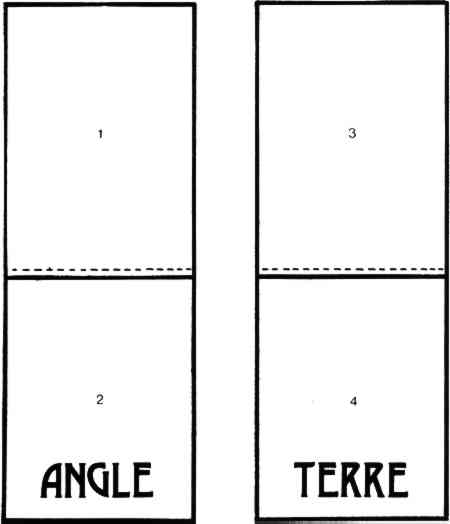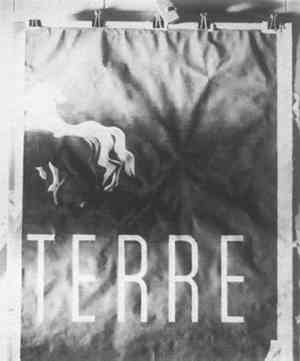TREATMENT AND MOUNTING OF A POSTER ANGLETERRE BY A.M. CASSANDREAntoinette Owen
1 INTRODUCTIONADOLPH JEAN-MARIE MOURON (French, 1901–68), known as A.M. Cassandre, helped to elevate the craft of commercial advertisement to the fine art of poster design. Active in the 1920s and '30s when Fauvism, Cubism and Futurism, although no longer the avant-garde, influenced all aspects of art and design, Cassandre was one of the earliest poster artists to understand that the images, uses of color, and theories that developed from these movements could enhance the impact and effectiveness of the poster's commercial message. Cassandre refused to fill space with any but the most essential copy and relied instead on the power of design to fix the public's attention on the advertised product. His posters were sometimes designed especially to be seen from a distance and were often mounted on building walls; these particular posters are very large, up to 13′ � 15′ on occasion. In 1978, the Hirshorn Museum and Sculpture Garden was given one of Cassandre's travel posters entitled Angleterre; it was designed, as were many of his posters, with only a single word designating the message. Angleterre, published in 1934, is a multicolored lithograph on lightweight, wove paper. Fiber analysis and microchemical tests indicate that the paper is a chemically purified wood pulp. Eight colors of ink (probably oil-based) were applied to the paper in the following order: white, yellow, yellow-green, forest green and pink (the latter two appear to have been applied during the same printing), black and brown (also applied at the same time), and lastly gray. The poster is made up of four equal quadrants of individual sheets of paper, each ca. 5′ by 4′. When first examined in the conservation laboratory, the poster was in two vertical strips, each strip 10′ by 4′. Quadrants 1 and 2 (see Fig. 1) were attached to each other bottom to top and backed to a cotton cloth with a starch-based adhesive (as indicated by the reaction of the iodine/potassium iodide stain described in B.L. Browning's Analysis of Paper). Quadrants 3 and 4 were attached and backed in the same manner. The two vertical strips had once been joined to each other side to side.
Examination of Angleterre revealed the following: the application of the cloth backing to the poster created overall distortions and small sharp creases in the poster. Raking light examination revealed an uneven attachment between cloth and poster in numerous areas. These air pockets created the large overall distortions in the poster (Fig. 2). The heavily inked portions of the poster differed in expansion and contraction rates from the cloth as well as from the uninked portions of the poster (the borders). During the backing procedure, the inked area of the poster (the design area) contracted
The dimensions of this object created certain logistical problems in its conservation treatment. Not the least of these was creating a space in which to wet and bathe the poster as well as providing an adequate support for handling the object when wet. Other concerns were designing a lining or backing procedure for each large quadrant which would provide enough tension during drying to pull out the creases and distortions caused by the previous lining, while at the same time avoiding too much tension over such a large area. The final questions to be answered were ones of mounting, display and storage. |

